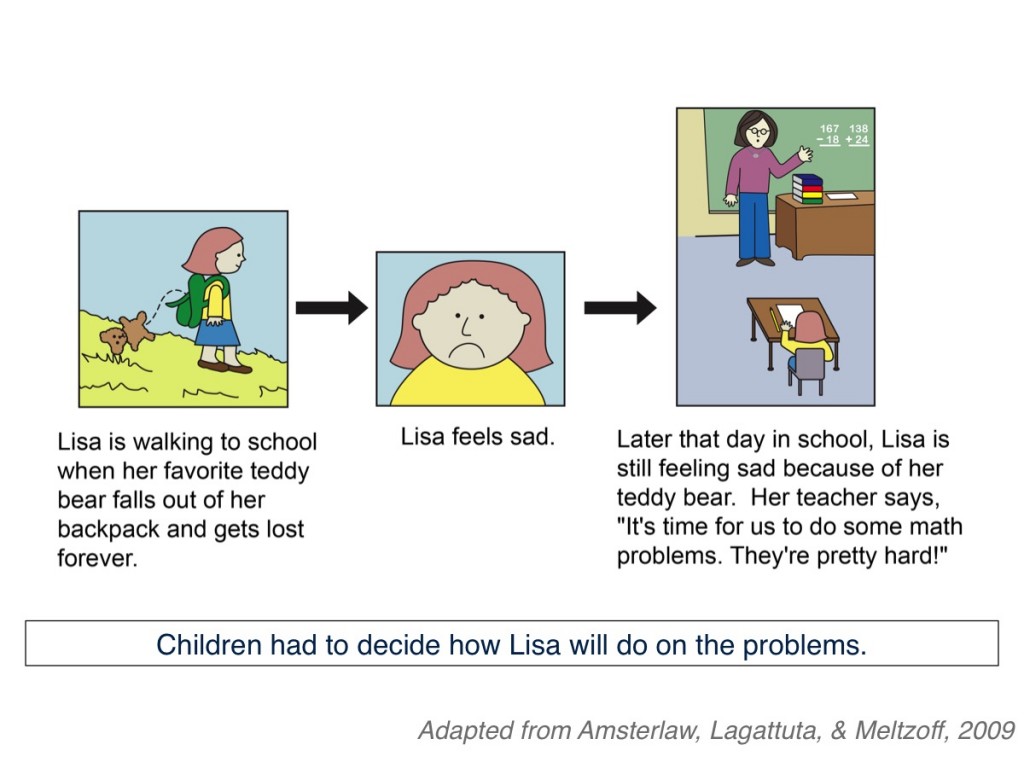
Children’s emotional development can also affect their performance in school. How is children’s emotional understanding related to school success as they get older? In one study, researchers asked children if our mental and physical states are related to school performance. Five-, 6-, and 7-year-old children listened to stories about other children who experienced an event that made them feel different emotions (such as happy or sad) or physical states (such as tired or well-rested). The children in the story then faced a challenging task at school (as shown in the above images).
The 5-, 6- and 7-year-old children all recognized the link between negative feelings, children’s physical states and school performance. However, only the 7-year-olds realized that our positive feelings could improve school performance. The 7-year-olds showed an adult-like understanding. Importantly, the older children showed a better understanding of why emotions and physical states affect school performance. They were also able to explain that how we feel can affect things such as our concentration, attention and the brain.
Young children experience a range of emotions and physical states throughout the day. Teaching children about why emotions and physical states affect school performance will help them in school. Children can learn to control how their emotions and physical states affect their school performance. Adults should talk about positive emotions such as confidence and optimism with children. This will support their emotion understanding and school success.
-
- Dyadic interaction
- a back-and-forth exchange between caregiver and child
- Self-regulation
- the ability to control our behaviors, emotions, and impulses
- Social emotional development
- learning to express and manage emotions and form positive relationships
- Social referencing
- looking to an adult for emotional information in an uncertain situation
- Triadic interaction
- a back-and-forth exchange between caregiver, child, and object